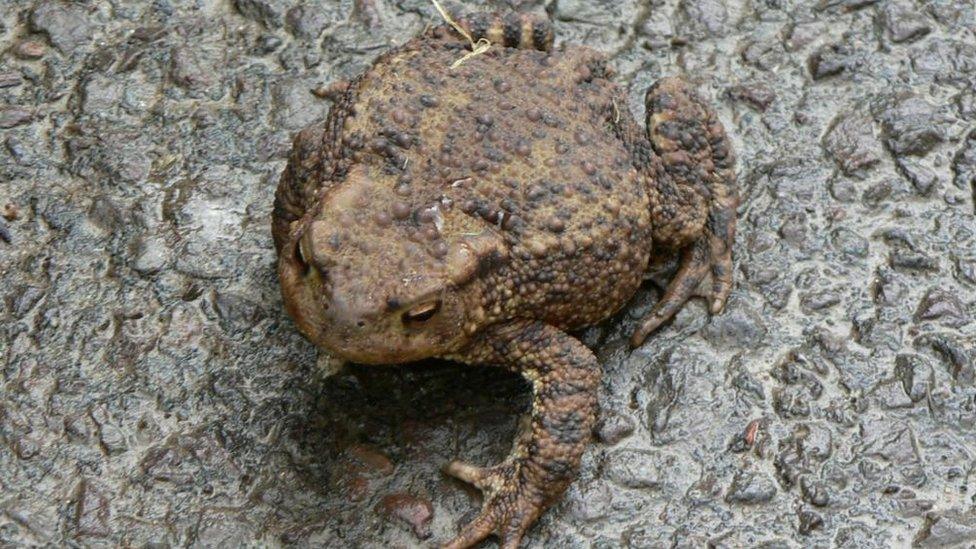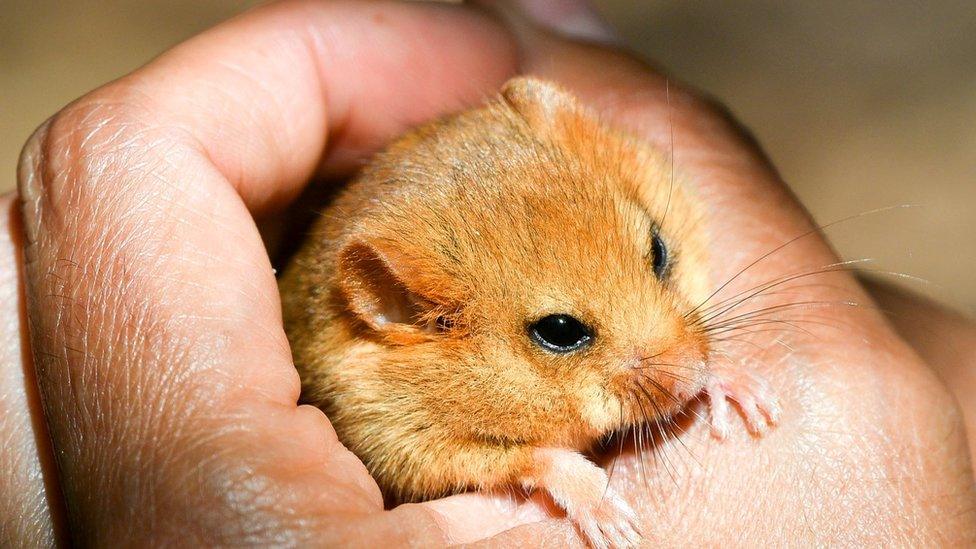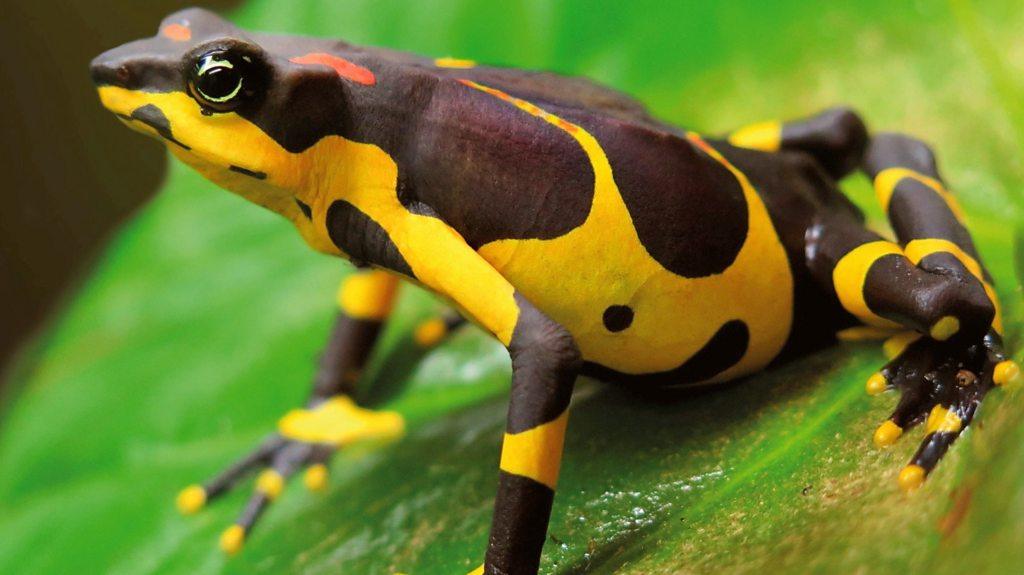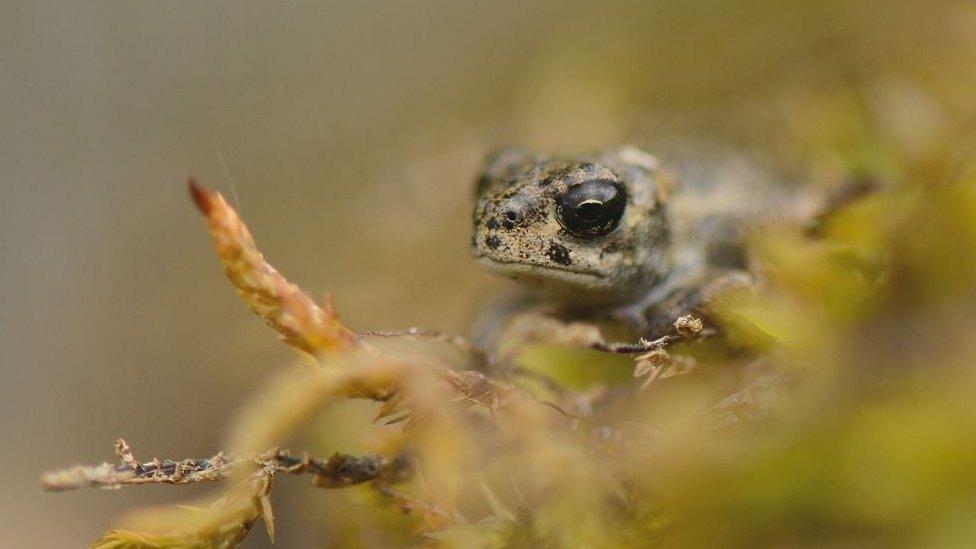University of Cambridge researchers find toads up trees
- Published

The study suggests there could be a substantial number of toads in the UK's trees
A project looking at hazel dormice and bats has found common toads were an unexpected inhabitant of trees.
University of Cambridge researchers found 65 records of amphibians in nest boxes and tree cavities.
Common toads are regarded as typical amphibians, spending time both on land and in water during breeding.
Dr Silviu Petrovan, from the University of Cambridge, said: "These findings are significant and very exciting."
The study published in the journal Plos One, external, and was completed with amphibian charity Froglife and the People's Trust for Endangered Species (PTES).
Volunteers were taking part in the National Dormouse Monitoring Programme run by PTES and the Bat Tree Habitat Key project.
Of the hundreds of sites surveyed annually for hazel dormice since 2009, 18 woodland sites had amphibians in nest boxes, which are generally placed 120 -150cm (4ft - 5ft) off the ground, and in one case a bird's nest.

Researchers were looking for the hazel dormouse which is threatened with extinction
In the 1,388 trees surveyed for bats, another 20 amphibians were found between 2015 and 2019.
Most of the 65 amphibians recorded were common toads and one had managed to get more than three metres (10ft) up a tree.
Experts suggest toads could be attracted to trees because they provide a damp environment with plenty of woodlice, slugs and ants to feed on, safe from predators and parasites.
The findings suggest the number of toads regularly using tree cavities in the UK could be "substantial", according to the study.
Dr Petrovan said: "We know common toads favour woodlands as foraging and wintering habitat, but it appears their association with trees is much more complex than we thought.
"Further, targeted research will enable scientists to better understand the reasons for this behaviour and the impact on woodland management for common toads and other amphibians."

Find BBC News: East of England on Facebook, external, Instagram, external and Twitter, external. If you have a story suggestion email eastofenglandnews@bbc.co.uk, external
Related topics
- Published14 March 2021

- Published7 August 2017
